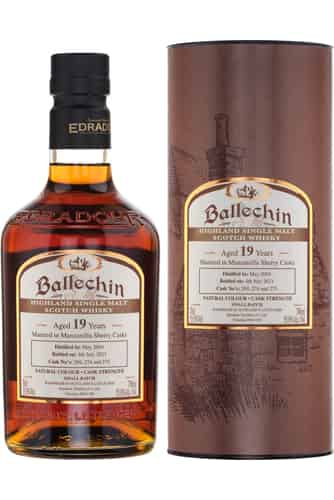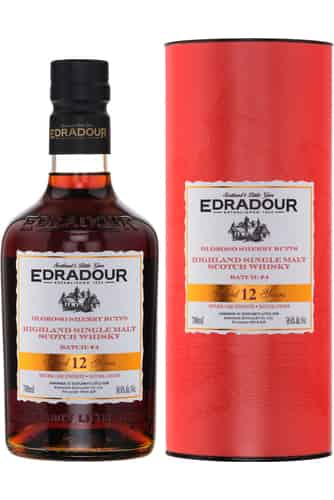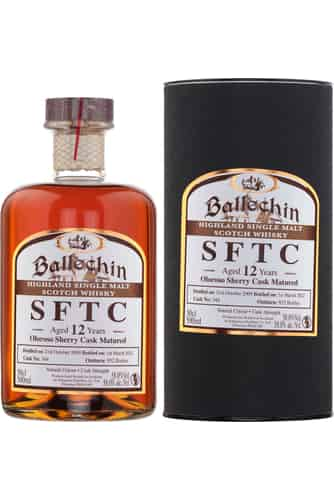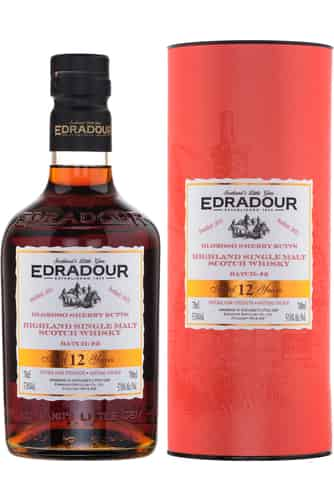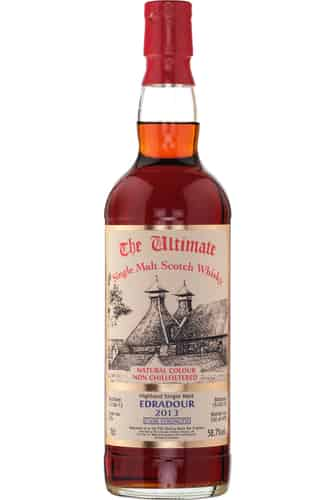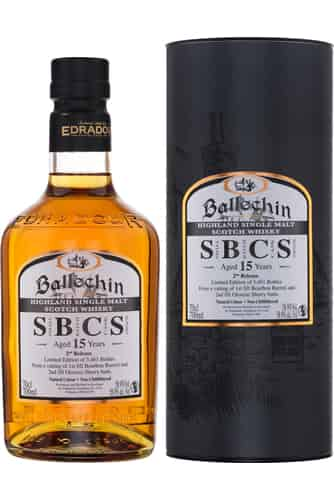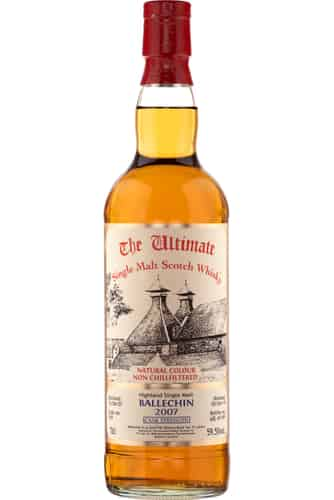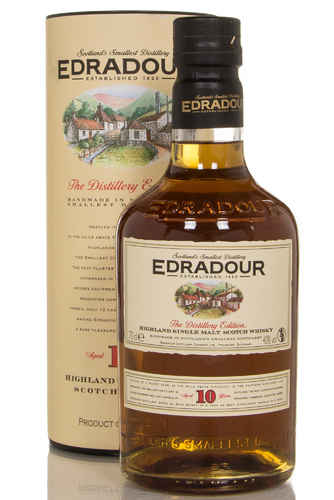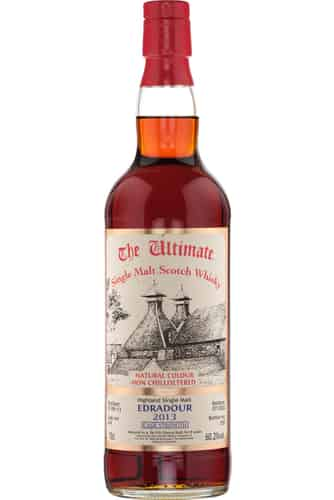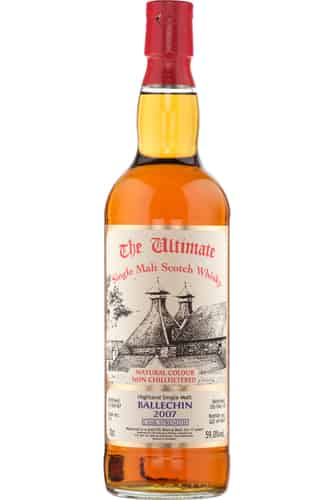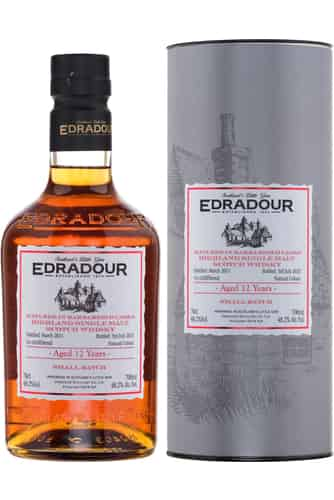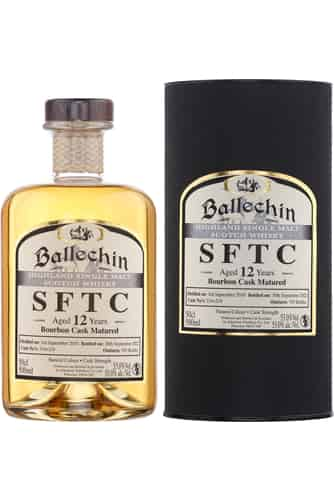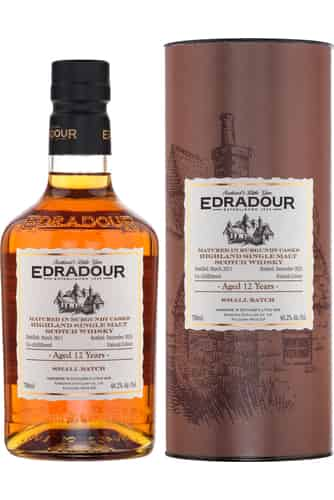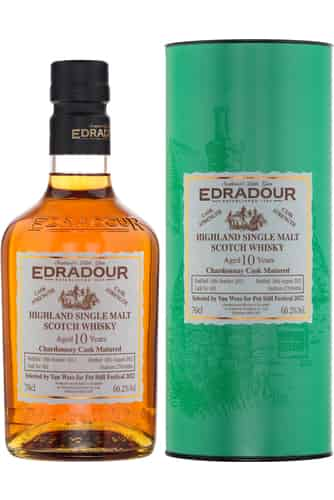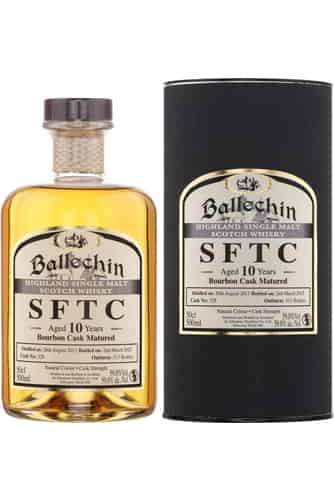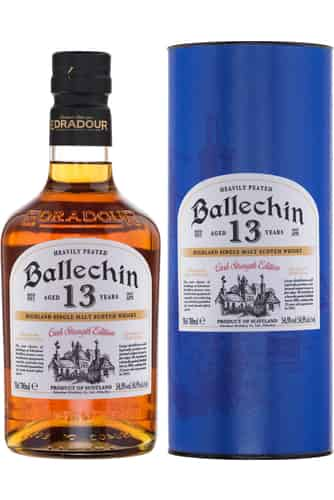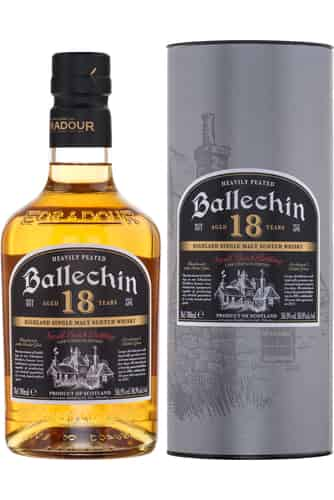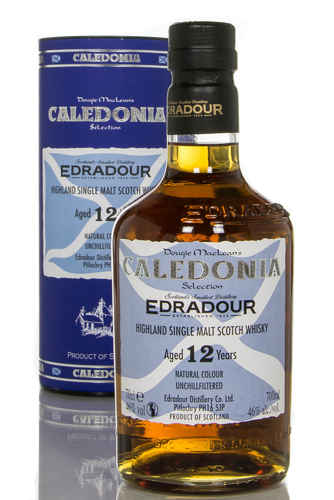Edradour
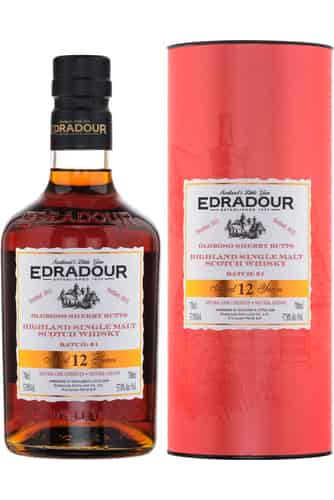
Edradour 12 Year Old 2011 Cask Strength (Batch 1)
70 cl, 57.8%In stock103.20 €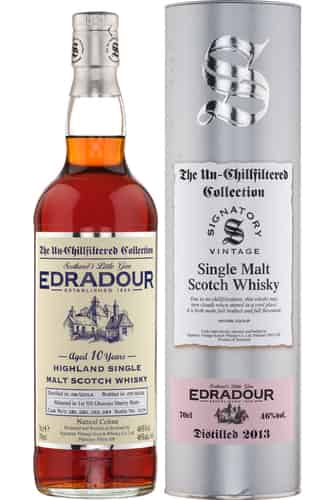
Edradour 10 Year Old 2013 - Signatory Un-Chillfiltered
70 cl, 46%In stock67.20 €![]()
Ballechin 19 Year Old 2004 Small Batch Manzanila (Cask #269 & #274 & #275)
70 cl, 55%In stock180.00 €![]()
Edradour 12 Year Old Cask Strength (Batch 4)
70 cl, 58.6%In stock103.20 €![]()
Ballechin 12 Year Old 2009 Sherry (Cask #344) - Straight From The Cask
50 cl, 58%In stock75.20 €![]()
Ballechin 17 Year Old 2005 Small Batch Burgundy (Cask #327 - 334)
70 cl, 53.5%In stock159.20 €![]()
Edradour 12 Year Old 2011 Cask Strength (Batch 2)
70 cl, 57.6%In stock103.20 €![]()
Ballechin 19 Year Old 2004 Small Batch Madeira (Cask #184 & #189)
70 cl, 53.5%In stock179.20 €![]()
Edradour 9 Year Old 2013 (Cask #276) - The Ultimate Whisky Company
70 cl, 58.7%In stock87.20 €- Save
12.00 €![]()
Ballechin 15 Year Old Small Batch Cask Strength - 2nd Release
70 cl, 58.9%In stock99.20 €111.20 € ![]()
Ballechin 11 Year Old 2007 (Cask #169) - The Ultimate Whisky Company
70 cl, 59.5%In stock76.80 €![]()
Edradour 10 Year Old
70 cl, 40%In stock48.00 €![]()
Edradour 8 Year Old 2013 (Cask #474) - The Ultimate Whisky Company
70 cl, 60.2%In stock87.20 €![]()
Ballechin 10 year Old
70 cl, 46%In stock45.60 €![]()
Ballechin 11 Year Old 2007 (Cask #171) - The Ultimate Whisky Company
70 cl, 59%In stock76.80 €![]()
Edradour 12 Year Old 2011 Small Batch Barbaresco Cask
70 cl, 48.2%In stock77.60 €![]()
Ballechin 12 Year Old 2010 Bourbon (Cask #214 & #219) - Straight From The Cask
50 cl, 53%In stock71.20 €![]()
Edradour 11 Year Old 2012 Small Batch Sauternes Cask
70 cl, 48.2%In stock75.20 €![]()
Edradour 12 Year Old 2011 Small Batch Burgundy Cask
70 cl, 48.2%In stock76.00 €![]()
Edradour 10 Year Old 2011 Chardonnay (Cask #401) - 2022 Pot Still Festival
70 cl, 60.2%In stock91.20 €![]()
Ballechin 10 Year Old 2011 Bourbon (Cask #328) - Straight From The Cask
50 cl, 59%In stock73.60 €![]()
Ballechin 13 Year Old Cask Strength (Batch 1)
70 cl, 54.9%In stock102.40 €![]()
Ballechin 18 Year Old Small Batch Cask Strength (Batch 1)
70 cl, 50.9%In stock145.60 €![]()
Edradour 12 Year Old Caledonia
70 cl, 46%Out of stock52.80 €
Sorry, we didn't find anything. Please try changing your search criteria.
Edradour History
Edradour is a truly charming distillery, perhaps best known for being one of Scotland’s smallest. The distillery is one of only a handful in Scotland that could be called "farm distilleries". Run by merely three men, Edradour has an artisanal approach, producing only 12 barrels of whisky a week through the same methods they used 150 years ago. Edradour makes a delightful whisky typical of the highlands: nutty, slightly herbal, with a creamy mouthfeel and hints of honey. They have also diversified their range with a peated line called "Balechin", and many interested wine cask releases. The distillery itself is picturesque, with quaint 19th Century buildings nestled in the farmland alongside a babbling brook. One visitor once commented: "as if some little Victorian lass had grown tired of playing beside the burn and had left her toy houses there to gladden the landscape". Aren’t we glad she did!
The distillery continues to use equipment from the mid-19th Century. As such they have some unique features, such as their open cast-iron mashtun. They use mostly unpeated malt, though for their Balechin line, Edradour peats their malt to 50ppm, one of the highest rates outside of Islay. Until recently there was no mill on site, but they have recently purchased a four roll precision mill, showing that despite their great history, the distillery is willing to adapt and move forwards. The water used in mashing and fermenting comes from a source underground in Mhoulin moor.
Edradour cool their wort with a Morton Refrigerator, which uses only cold water, it is the last of its kind still in use in the whisky world. This wort is then transferred to two pine washbacks, which are both over 50 years old. Fermentation occurs for 48 hours, before the beer is taken to two stills- one spirit and one wash. The spirit still is the smallest traditional still in Scotland with a capacity of 2,250 litres. These small stills allow for a lot of copper to spirit contact, meaning that the new make is a very high quality. The worm tubs are also copper, accentuating this, and are cooled in water from the nearby burn, a practice that many distilleries no longer use.
The distillery continue another tradition in giving their draff away to local farmers to feed to their cattle. Unlike many distilleries, Edradour takes its spirit cut without the use of computers, and relying solely the eagle eye and expertise of the stillman. After this, the spirit is taken away for maturation in dunnage warehouses.
Previously, Edradour used strictly ex-bourbon and sherry casks, but this changed with new management and they now have the widest ranging cask portfolio in the whisky world. Edradour has also experimented successfully with younger whiskies, and single cask releases, turning their former reputation for batch inconsistency into a strength.
Edradour was first founded as a farm distillery in 1825 (there was an illicit still at the site two years prior to this), under the name "Glenforres", by a group of Perthshire farmers. 1837 marks the first recorded mention of the name "Edradour". Sometime between 1841 and 1852 John MacGlashan & Co. is formed as the owning company, before a company called John Reid & Co. takes over, when co-owner Donald Reid declares bankruptcy.
It wasn’t until 1884 that the distillery really thrived, when John McIntosh, the son of one of the original farmer’s cooperative, takes over. In 1907 his nephew would continue the dynasty by becoming a partner in the firm. Four years later, John Stewart would also become a partner and work on increasing production and the scope of the distillery. The 1920s saw the distillery continue to thrive, and in the 30s it was bought by the "Dean of Distillers" American William Whiteley, who had already been using Edradour in his flagship blends, "House of Lords" and "King’s Ransom" (then marketed as "the world’s most expensive whisky").
In a very surreal twist, Whiteley, upon his retirement, gave control of the distillery to Frank Costello, a Mafia Godfather, and the head of one of the famous "Five Families of New York". In 1941, 20,000 cases of whisky sink off the coast of Eriskay, including many bottles of "King’s Ransom" and "House of Lords", which later inspired the book and film "Whisky Galore". It’s a brave man who steals off the Mafia! Despite these dubious connections, "King’s Ransom" continues in popularity, and is on the table at the Potsdam convention after World War II.
In 1947, the distillery was electrified, and the water wheels in the nearby burn finally stop turning. In 1976 Edradour was sold to an American and Australian consortium. This marked a period of success for the distillery and in 1980 it received the queen’s award for Export Achievement. In ’82, Pernod Ricard buys the distillery and opens a visitor centre the next year, one of the very first in scotch whisky. In 1986, single malt Edradour becomes available for the first time, with the release of its 10 year old expression, though this marks the discontinuation of the previously illustrious "King’s Ransom" blend.
In 2002 Andrew Symington’s Signatory brand, known for their independent bottlings, buys the distillery. The whisky stocked in the warehouse is estimated to be worth £3million. They are immediately faced with a challenge as the distillery suffers great flooding in August. In 2003 the distillery releases the first of their Balechin peated malts. In 2007 Signatory moved its operations there, and opened a bottling plant at the distillery, meaning that nearly the whole Edradour product is manufactured on site.
Post-2010 has seen a lot of redevelopment, including a refurbished malt burn, a new dunnage warehouse and a new hall for hosting events. Edradour has gone from strength to strength, and continues to impress with new releases of single cask and wine matured whiskies.
Current Range
Edradour has a very wide current range, including their entry level 10 year old, an 18 year old and many wine finished releases and single cask bottlings.
In addition to this is the Balechin line, which is peated, and also has finished and single cask releases.
Notable Releases
Edradour’s official bottlings of 1980s casks have been very well received, in particular the 1985 Ximenez single cask, and the 1983 "Farewell to 1983" bottling. However, there are many single cask bottlings and independent bottlings that have been received well. The natural cask strength is beautifully packaged, and well regarded, making it the perfect gift for any whisky lover.
Did You Know?
- Due to the picture postcard setting of Edradour, the distillery receives 100,000 visitors year, and produces 90,000 litres of whisky a year- meaning that for every litre sold, at least one person has visited the distillery.
- An upshot of the 150 year old machinery was an inability to maintain batch consistency, but under the new management, finishes and single cask releases have transformed this to a strength.
- Edradour maintains that it is the smallest distillery in Scotland, though Kilchoman, Benromach and Daftmill could also claim this title.


